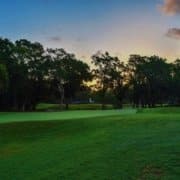Golf Course Irrigation Expenses Threaten Existence of Private Club
Case Study
Facility: 18-hole championship course, fitness center, large pool complex, indoor and outdoor golf practice facilities, multiple restaurants with catering.
Location: Southwestern United States
Ownership: Formerly owned privately until membership group purchased the club in the mid-2000’s.
Focus: Cost Containment
About: This club was struggling to break even financially despite a rich history and strong local reputation. With so many amenities and club assets, there were a few major, and unique hurdles that we needed to overcome to be successful.
Challenges We Faced:
The major elephant in the room was that this facility had to buy its water for irrigation from the city as standard tap water. At the time, the irrigation water line item was $800,000 annually and going up – nearly $2,500 per golfing member. The club was being priced out of the market and the prospect of survival was not good unless this issue could be resolved soonest.
The clubhouse was also significantly outdated, diminishing the marketability of the club in a tightly contested marketplace.
Solutions:
The club’s situation was dire. We deployed a number of aggressive and complex solutions simultaneously to produce the highest impact possible. Without drastic measures, the centerpiece of this beautiful community would go out of business.
Financial Audit
We began by looking for opportunities within the budget for savings, and conducted analysis of all electronics, phone lines, and communication devices within the facility.
We streamlined payroll expenses and leveraged economies of scale to improve buying power. As a management group, we were able to negotiate more advantageous prices and payment terms than the club ever could on its own. Our budget analysis and overhaul of all facility services yielded $350,000 in quick win savings.
Clubhouse Renovation
The short term injection of cash flow opened up opportunity for the club to finance some clubhouse upgrades and renovations. The grill room and locker rooms were remodeled. We constructed a sensational outdoor terrace area overlooking the golf course – well suited for member dining, large events, and weddings. Upgrades in kitchen facilities helped us gain efficiency, cut operating costs and administer to larger groups than ever before.
Event and Membership Sales
Our goal was to increase membership size. All of our club programming was updated to be much more family-oriented – swimming, tennis, fitness, group classes, social golf events, etc. We even started cooking classes in our new facilities. Additionally, we hired an event salesperson on a contingency basis to begin marketing the club as a wedding and corporate event destination. After refining our membership offerings, we engaged our members in the sales process using our 85/50 program. In the first 2 months of our new offerings, we picked up another 50 memberships, most of whom were families who were making the club their recreational focus.
Golf Course Irrigation Resolution
Simultaneously, the enormous water bill was looming overhead, threatening agronomy. Management and membership formed a water committee to navigate the long, arduous journey to find a reasonable solution for our golf course irrigation. Without resolving this annual expense, the club would never survive.
The committee was very active, and dove deep into numerous possibilities of neutralizing this expense. We looked into every option – from buying other peoples’ water rights, to building our own pipeline to the facility. We met numerous times with the city as well. Using comprehensive research and market data, we sought to stress the impact our community had on local tax revenue. This was a very difficult task. The public’s perception of golf courses is one of affluence and privilege.
After a long negotiation, the city finally agreed to freeze water fees within 12 months. While the water expense wouldn’t go away, at least it was not increasing at a rate that would put the club out of business.
The Outcome
The club was ultimately able to survive, and even thrive with all of these changes. The city eventually recognized that a healthy country club would bring many multiples in terms of economic growth and tax revenues over the water concessions they had granted. A golf course turning to tumbleweeds would mean depressed property values and the spread of urban blight in this situation.
The club immediately went from a break even scenario to a substantial positive cash flow. The club remains a social center in the community, and they were able to allocate resources to further capital improvements and upgraded furnishings (FF&E).
- How Golf Courses are Leveraging Cheaper Remote Consulting for Success - October 5, 2023
- Top 3 Reasons Why Private Golf Courses are Struggling in 2023 - September 5, 2023
- How to make the most of your prospect lists - May 7, 2019








